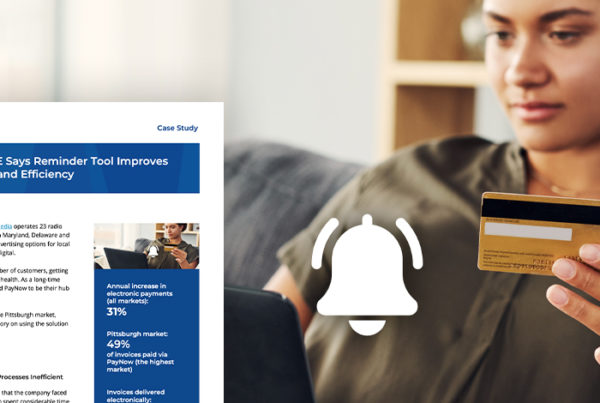One of the most substantial hurdles for your sales team is when technology limits them rather than helps them. That’s because most broadcast order management platforms were built for traffic managers, not salespeople. That leads to inefficiencies and manual work, taking time away from selling. With a sales growth platform, you can put a solution in place that aligns with the sales cycle.
In evaluating sales growth platforms for broadcast, you can assess the offerings in many ways. To guide you in this exploration, check out these features and the benefits they bring that you and your team will appreciate.
Top Sales Growth Platform Features to Evaluate
Intuitive User Interface
Most users consider older broadcast sales platforms and order management systems clunky and hard to use. The interfaces don’t have the contemporary look of most of today’s applications. How a system “looks” to a user can impact their ability to use it. Multiple drop-downs and clicks to find information only eat away a salesperson’s time and lead to frustration.
Ideally, you want a system built on modern design architecture with a seamless user interface. The user experience is vital in the adoption of any technology. If your people find a system difficult to operate and learn, they won’t realize true value from it.
Accessible Avails and Rates in Real Time
A key element of an effective sales growth solution is accessing avails and rates in real time within the platform. It’s very rare to find this functionality. Typically, salespeople must check avails in traffic systems and then locate rate cards in spreadsheets to gather the necessary information for an accurate proposal. Because there’s a lot of back and forth, corrections or errors often occur.
With legacy order management systems, this standard process can take up to three hours for just one proposal and order, whereas the process takes about 15 minutes if you have access to everything in one platform.
Integrated Proposal Builder and Order Entry
Creating proposals in minutes within a central system is a huge time saver for salespeople. Otherwise, they’ll have to use another system, manually adding information, which could cause mistakes and impact productivity.
The next step is turning the proposal into an order. Again, you’ll save time and energy if you can do that with one click in the same platform. If that’s not an option, it may require re-entry into a traffic platform and slow down the workflow.
A solution with templates keeps everything consistent. You can also save time by having orders flow directly from sales to traffic. Traffic can then approve quicker, so no one is wasting time. Streamlining proposals and order management is a huge benefit for all parties.
Yield Management Tool
With a yield management tool, you can approach pricing linear ad spots in a new way based on data. It does the work for you, dynamically pricing spots based on demand, timelines, historical data and other factors. It should be a core component of a sales growth platform. If you have to depend on spreadsheets, rate “experts” or intuition, maximizing revenue for every spot is difficult.
For the tool to truly do it for you, it should include prebuilt rate curves that apply to various situations. You’ll also want the ability to assign rates as granularly as every 30 minutes. Integrations with ratings data are also a plus. Finally, if you have contracted rates with specific clients, you’ll want to be able to exclude those.
Often, this can be an add-on or integration with sales platforms, and you’ll incur more expenses to have all the functionality you need.
Web-Based Accessibility
Web- or browser-based means you can access the system anywhere as long as you have an internet connection and a login. On-premises solutions don’t provide this freedom. Users need to be in the office. You may be able to use it via a virtual desktop and VPN, but it won’t be the best user experience.
Campaign Reporting
The performance of a campaign is a critical report that your advertisers expect. You want to easily run this in the same system where you created the proposal and order and include near-real-time results. In reviewing reporting capabilities, make sure this is possible and isn’t an additional module that adds to your software costs.
Sales Performance Reporting
The second set of reporting capabilities you’ll want relates to your sales pipeline and seller performance. These reports will allow you to forecast more accurately based on real-time information. Inquire about custom reporting and if the system has a dashboard for visibility of key metrics. Exporting the data via Excel is another functionality that can be helpful as you monitor the health of sales. These reports are a great tool for sales managers to share with leadership for a clear picture of revenue.
CRM (Customer Relationship Management) System
With an integrated CRM tool within the system, your salespeople will have easy access to customer information without moving to another platform. Many sales growth platforms offer third-party integrations with leading CRM tools, and that’s an option. However, if you have one in the system, you aren’t paying any additional costs. Additionally, by using the integrated CRM tool, you’ll keep traffic data clean and separate.
At a minimum, the CRM tool should have these features:
- Ability to add and manage prospects and customers
- Account activity tracking
- Same-screen account trend visuals
- Deal stage flow management visuals
- Integrated linear order conversion
Responsive Support and Assisted Onboarding
When implementing a new platform, you want to make sure you have the support you need to deploy it successfully. Look for a partner that includes consultations on configuration, training sessions, post-launch check-ins and continued support.






